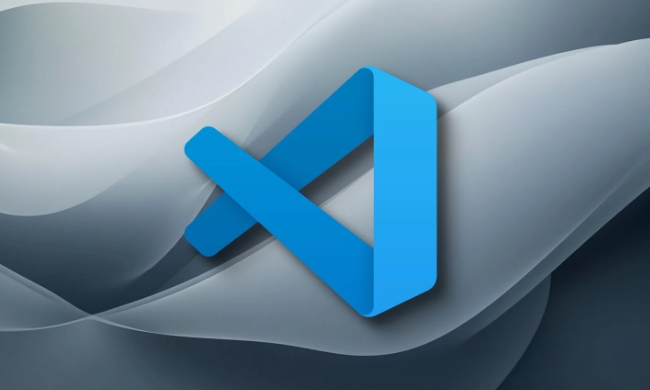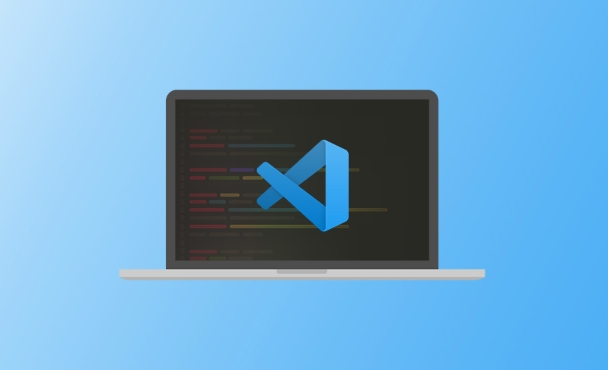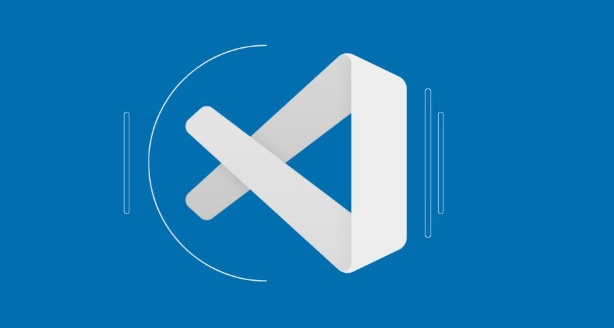Yes, you can debug web pages in Chrome directly from VSCode. You need to install the Debugger for Chrome extension and configure launch.json. 1. Install the "Debugger for Chrome" extension in VSCode; 2. Make sure the project generates source maps (such as Webpack sets devtool and TypeScript enables sourceMap); 3. Create a launch.json configuration file in VSCode and specify Chrome startup parameters such as url and webRoot; 4. After starting the local development server, run the configuration through the Run and Debug panel. Chrome will open and hit the breakpoint set in VSCode to achieve the complete debugging process.

Debugging a web page in Chrome directly from VSCode is possible using the Debugger for Chrome extension and proper launch configuration. This setup lets you set breakpoints in your JavaScript/TypeScript code in VSCode and have them hit when the code runs in Chrome — all without leaving your editor.

Here's how to set it up:
1. Install the Required Extension
First, install the "Debugger for Chrome" extension in VSCode:

- Open VSCode.
- Go to the Extensions view (
Ctrl Shift XorCmd Shift Xon Mac). - Search for "Debugger for Chrome" (by Microsoft).
- Install it.
Note: This extension launches Chrome or attaches to an existing instance and enables debugging from VSCode.
2. Enable Source Maps in Your Project
For debugging to work properly (especially with frameworks, TypeScript, or translated code), you need source maps so that breakpoints in your original source files map correctly to the code running in the browser.

Make sure your build tool (Webpack, Vite, etc.) generates source maps:
- Webpack : Set
devtool: 'source-map'or'eval-source-map'inwebpack.config.js. - Vite : Source maps are enabled by default in dev mode.
- TypeScript : In
tsconfig.json, ensure:{ "compilerOptions": { "sourceMap": true, "outDir": "./dist" } }
3. Configure launch.json in VSCode
Create a debug configuration that tells VSCode how to launch Chrome and map files.
- In VSCode, go to the Run and Debug view (
Ctrl Shift D). - Click "create a launch.json file" if you don't have one.
- Choose "Chrome" as the environment.
- Replace the content with a working config. Here's a common example:
{
"version": "0.2.0",
"configurations": [
{
"name": "Launch Chrome against localhost",
"type": "chrome",
"request": "launch",
"url": "http://localhost:3000",
"webRoot": "${workspaceFolder}",
"sourceMapPathOverrides": {
"webpack:///./.*": "${webRoot}/*",
"webpack:///*": "*",
"webpack:///src/*": "${webRoot}/src/*"
}
}
]
}Key Options Explained:
-
"url": The address of your running dev server (eg,http://localhost:3000). -
"webRoot": Maps the source files in Chrome to your local project folder. -
"sourceMapPathOverrides": Helps VSCode find your original source files when using bundlers like Webpack.
?? Make sure your dev server (eg,
npm start,vite,webpack serve) is already running before starting the debug session.
4. Start Debugging
- Start your development server (eg,
npm run start). - In VSCode, go to the Run and Debug panel.
- Select the "Launch Chrome against localhost" configuration.
- Click Run (F5).
Chrome will open (or reuse an instance, depending on settings), and your app will load.
Now:
- Set breakpoints in your
.js,.ts, or.tsxfiles in VSCode. - When the code executes in Chrome, execution will pause at those breakpoints.
- You can inspect variables, call stack, and step through code — all in VSCode.
Tips & Troubleshooting
Breakpoints not hitting?
- Double-check source map generation.
- Verify file paths in
sourceMapPathOverrides. - Try using
"trace": trueinlaunch.jsonto see mapping logs.
Use
"request": "attach"to connect to an already open Chrome- Start Chrome with remote debugging enabled:
chrome --remote-debugging-port=9222
- Use this
launch.jsonconfig:{ "name": "Attach to Chrome", "type": "chrome", "request": "attach", "port": 9222, "webRoot": "${workspaceFolder}" }
- Start Chrome with remote debugging enabled:
Works best with simple settings or Create React App, Vite, Angular CLI . Complex bundler configs may need custom path overrides.
Basically, it's a combo of the right extension, source maps, and a solid launch.json . Once set up, debugging frontend code from VSCode feels seamless.
The above is the detailed content of How to debug a web page in Chrome from VSCode. For more information, please follow other related articles on the PHP Chinese website!

Hot AI Tools

Undress AI Tool
Undress images for free

Undresser.AI Undress
AI-powered app for creating realistic nude photos

AI Clothes Remover
Online AI tool for removing clothes from photos.

Clothoff.io
AI clothes remover

Video Face Swap
Swap faces in any video effortlessly with our completely free AI face swap tool!

Hot Article

Hot Tools

Notepad++7.3.1
Easy-to-use and free code editor

SublimeText3 Chinese version
Chinese version, very easy to use

Zend Studio 13.0.1
Powerful PHP integrated development environment

Dreamweaver CS6
Visual web development tools

SublimeText3 Mac version
God-level code editing software (SublimeText3)

Hot Topics
 How to change the default terminal in vscode settings?
Jul 05, 2025 am 12:35 AM
How to change the default terminal in vscode settings?
Jul 05, 2025 am 12:35 AM
There are three ways to change the default terminal in VSCode: setting through a graphical interface, editing settings.json file, and temporary switching. First, open the settings interface and search for "terminalintegratedshell" and select the terminal path of the corresponding system; secondly, advanced users can edit settings.json to add "terminal.integrated.shell.windows" or "terminal.integrated.shell.osx" fields and escape the path correctly; finally, you can enter "Terminal:SelectD through the command panel
 VSCode debugger for Java setup guide
Jul 01, 2025 am 12:22 AM
VSCode debugger for Java setup guide
Jul 01, 2025 am 12:22 AM
The key steps in configuring the Java debugging environment on VSCode include: 1. Install JDK and verify; 2. Install JavaExtensionPack and DebuggerforJava plug-in; 3. Create and configure the launch.json file, specify mainClass and projectName; 4. Set up the correct project structure to ensure the source code path and compilation output are correct; 5. Use debugging techniques such as Watch, F8/F10/F11 shortcut keys and methods to deal with common problems such as class not found or JVM attachment failure.
 How do I resolve 'command not found' errors in the VS Code terminal?
Jul 04, 2025 am 12:50 AM
How do I resolve 'command not found' errors in the VS Code terminal?
Jul 04, 2025 am 12:50 AM
1. Confirm whether the command is installed 2. Check the terminal shell type 3. Update the PATH environment variable 4. Restart VSCode or terminal. When you enter a command in the VSCode terminal, you should first check whether the command has been installed correctly and can be verified through other terminals of the system; secondly, confirm the shell type used by VSCode and check its configuration file; then make sure that the path where the command is located has been added to the PATH environment variable, and manually add and reload the configuration if necessary; finally close and reopen the terminal or restart VSCode to make the changes take effect.
 How do I use VS Code's settings sync feature?
Jul 03, 2025 am 12:43 AM
How do I use VS Code's settings sync feature?
Jul 03, 2025 am 12:43 AM
TosyncVSCodesettingsacrossdevices,signinwithaGitHuborMicrosoftaccount,customizewhatgetssynced,andmanuallytriggersyncwhenneeded.First,openVSCodeandsigninviatheprofileiconorCommandPaletteusing"Sync:TurnonSync".Next,choosewhattosyncsuchassetti
 Fixing 'Timed out waiting for the debugger to attach' in VSCode
Jul 08, 2025 am 01:26 AM
Fixing 'Timed out waiting for the debugger to attach' in VSCode
Jul 08, 2025 am 01:26 AM
When the "Timedoutwaitingforthedebuggertoattach" issue occurs, it is usually because the connection is not established correctly in the debugging process. 1. Check whether the launch.json configuration is correct, ensure that the request type is launch or attach and there is no spelling error; 2. Confirm whether the debugger is waiting for the debugger to connect, and add debugpy.wait_for_attach() and other mechanisms; 3. Check whether the port is occupied or firewall restricted, and replace the port or close the occupied process if necessary; 4. Confirm that the port mapping and access permissions are configured correctly in a remote or container environment; 5. Update VSCode, plug-in and debug library versions to solve potential
 How do I configure VS Code to automatically save files?
Jul 01, 2025 am 12:47 AM
How do I configure VS Code to automatically save files?
Jul 01, 2025 am 12:47 AM
Yes,VSCodecanautomaticallysavefiles.Toenableauto-save,gotoFile>AutoSave(Windows/Linux)orCode>AutoSave(macOS),andcheckthebox.Youcanalsosetittosaveonfocuschangebyadding"files.autoSave":"onFocusChange"tosettings.json.Formorecon
 What are VS Code workspaces, and how are they used?
Jul 10, 2025 pm 12:33 PM
What are VS Code workspaces, and how are they used?
Jul 10, 2025 pm 12:33 PM
VSCode workspace is a .code-workspace file that saves project-specific configurations. 1. It supports multi-root directory, debug configuration, shortcut key settings and extension recommendations, and is suitable for managing different needs of multiple projects. 2. The main scenarios include multi-project collaboration, customized development environment and team sharing configuration. 3. The creation method is to save the configuration through the menu File>SaveWorkspaceAs.... 4. Notes include distinguishing between .code-workspace and .vscode/settings.json, using relative paths, and avoiding storing sensitive information.
 How to set environment variables for the terminal in VS Code settings on Linux?
Jul 06, 2025 am 12:23 AM
How to set environment variables for the terminal in VS Code settings on Linux?
Jul 06, 2025 am 12:23 AM
There are two ways to set environment variables for VSCode terminals on Linux: one is to use the terminal.integrated.env.linux configuration item to define variables that are only used by VSCode; the other is to modify the shell configuration file to take effect globally. 1. In VSCode, add variables such as "MY_VAR":"my_value" by setting the terminal.integrated.env.linux field. This method only affects the VSCode terminal; 2. Modify shell configuration files such as ~/.bashrc or ~/.zshrc and add exportMY






